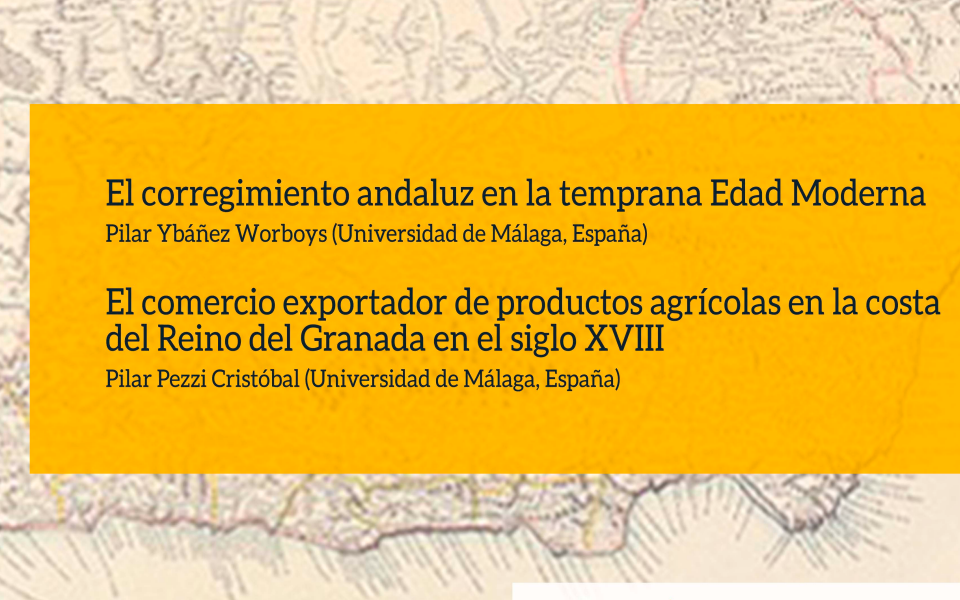
Lecture «The export trade of agricultural products on the coast of the kingdom of Granada in the Eighteenth century» by Pilar Pezzi Cristóbal (Universidad de Málaga, España)
The Andalusian Corregimiento In The Early Modern Age
During the Modern Age, the corregimiento constitutes the axis of the territorial administrative machinery of the monarchy and its strongest support in the cities. Thus, since its incorporation into the Castilian crown, the Andalusia in the thirteenth century and the kingdom of Granada at the end of the fifteenth century, it proceeds to implement this institution in both territories, maintaining itself throughout the Old Regime. Its address will fall on an official of exclusively real designation: the corregidor, maximum authority of the different cities in his capacity of delegate and royal representative. The wide range of its powers ranged from the conduct of war matters, the delivery of justice in the first instance to an almost total competence in fiscal, political and administrative matters.
The concentration in a single individual of such extensive powers required the appointment of able and capable persons who, in addition, held the indispensable noble status. Its effectiveness in carrying out these responsibilities supported the purpose of the institution itself: the defense of real interests and the government of local life.
Pilar Ybáñez Worboys, Professor of Modern History, Department of Modern and Contemporary History, Faculty of Philosophy and Arts, University of Málaga (Spain). His lines of research focus on the 16th century, the municipal administration on its more institutional side, with special dedication to local oligarchies and clientelistic networks, as well as mentalities, religiousness and festive atmosphere. These themes were extended both to the kingdom of Granada and to the Crown of Castile.
The export trade of agricultural products on the coast of the kingdom of Granada in the Eighteenth century
Since the Middle Ages, the coast of the kingdom of Granada, and Vélez-Málaga and its land were known as producers of nuts, raisins, figs and almonds, distributed by Genoese merchants reached throughout Europe from the bay of Torre del Mar. It was an agricultural system that had managed to transcend its subsistence needs to focus on a monoculture for export, but which maintained a strong dependence on foreigners who monopolized that trade.
In the 18th century this raisin trade was maintained, with a system of commission agents who prepared the exporting tasks buying the fruit for their own account or for others and storing the product for the vending, linked to the Malaga High Maritime Trade hoarding the market and imposing prices, protected by an economic solvency that allowed them to make advances for the harvest and in a privileged relationship with the members of the municipal council. Other products were also incorporated, such as cane sugar and citrus fruits, which completed the speculative agriculture of the area.
Pilar Pezzi Cristóbal, Professor of Modern History in the Department of Modern and Contemporary History of the Faculty of Philosophy and Letters of the University of Málaga (Spain). His research focuses on the Eighteenth century, with various themes such as the municipal administration of Vélez-Málaga, contraband and power elites of the Kingdom of Granada.
Organization Committee
Mar García Arenas (CHAM)Organization
CHAM / NOVA FCSH
Abstracts(.pdf)
Poster(.pdf)







